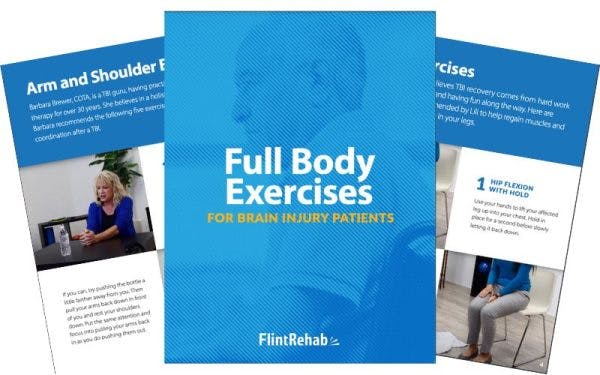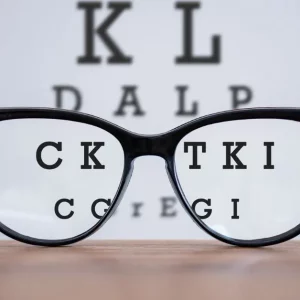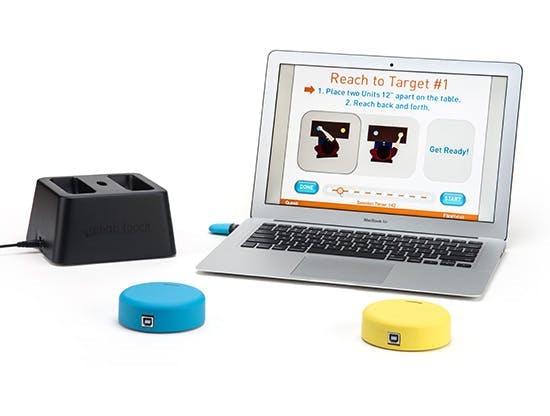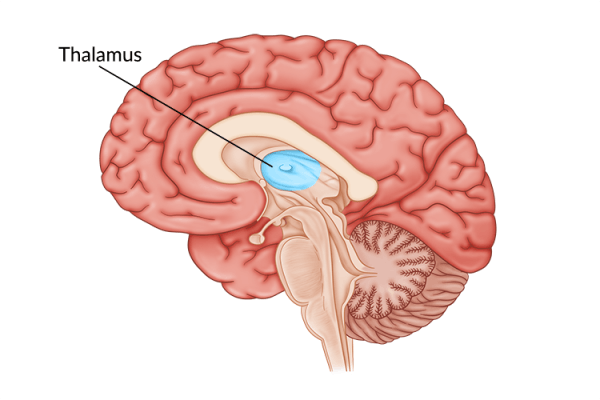Many survivors are eager to return to walking after brain injury. Relearning to walk effectively typically involves improving one’s gait, or manner of walking, to regain independence and confidence while moving throughout the home and community.
To help survivors resume walking after brain injury, this guide will explain some of the challenges survivors experience when learning to walk, along with describing the steps individuals can take to improve their gait. Working with a physical therapist is essential for an optimal recovery of walking abilities.
Please feel free to use the links below to jump directly to any section of this article.
- How does a brain injury affect walking skills?
- Recovering through brain rewiring
- How to regain the ability to walk again after brain injury
How Does a Brain Injury Affect Walking Skills?
A traumatic brain injury occurs when the brain sustains damage due to an external force. Depending on which areas of the brain are damaged, survivors may experience many different secondary effects.
Some of these secondary effects can affect a person’s gait, or ability to walk, including:
- Balance problems. Between 30% and 65% of traumatic brain injury survivors struggle with their sitting or standing balance. These difficulties can stem from a range of issues, including muscle weakness, inner ear damage, and damage to the cerebellum, one of the brain areas responsible for maintaining balance.
- Difficulties with coordination. Walking effectively requires an extensive amount of muscle coordination. If the muscles are unable to move in coordinated patterns, such as may happen after primary motor cortex damage, walking can become impaired.
- Spasticity. When a brain injury disrupts the connection between the brain and the muscles, the brain can no longer effectively send signals to the muscles telling them when to contract. As a result, spasticity and muscle tightness can set in, making walking after brain injury much more difficult.
With such a variety of causes for poor gait after brain injury, it is important for brain injury survivors to work closely with their physical therapists to diagnose and rehabilitate their walking abilities.
How Can I Train My Brain to Walk Again?
Walking after brain injury involves retraining the brain to properly control the muscles involved in walking. Consistent and repetitive practice stimulates the brain to build and strengthen neural pathways, allowing adaptive rewiring to occur. This process is referred to as neuroplasticity.
After a brain injury, neuroplasticity allows the brain to compensate for the damage incurred. Although damaged brain cells cannot regenerate, neuroplasticity allows healthy areas of the brain to take on impaired functions.
When affected functions are practiced repetitively and consistently, the brain perceives a need for those functions. This is why the brain creates and strengthens neural pathways for activities that are practiced regularly.
During gait rehabilitation after TBI, survivors practice therapeutic movements involved in walking. Depending on the problem area, the individual may practice different types of exercises, such as leg or balance exercises. When these exercises are practiced with high repetition, it stimulates neuroplasticity and encourages the brain to improve efficiency of the associated movements.
Therefore, a brain injury survivor can train their brain to be able to walk again through repetitive practice of gait rehabilitation exercises. The most effective exercises for walking after brain injury vary depending on the individual’s specific condition. Therefore, consulting with a physical therapist is essential to resume walking after brain injury.
Rehabilitative Exercises to Walk Again After Brain Injury
Rehabilitative exercises are a critical step towards regaining the ability to walk after brain injury. While working with a physical therapist to create a customized rehabilitation regimen is ideal, there are many exercises that individuals can try at home as well.
Since every brain injury is unique, each survivor will have a different starting point in their recovery. Some may be able to walk with a walker immediately after their injury, while others may be unable to move their legs at all.
Additionally, it is important to remember that walking is a full-body activity, with the legs, trunk and arms all moving in a coordinated fashion. Therefore, while the legs are the primary target of most exercises associated with walking after brain injury, it can also be beneficial to include core, arm, and whole-body exercises as well.
Finding appropriate exercises for the survivor’s abilities is essential to ensure that the recovery process is challenging, but not overly difficult. Therefore, the following guide begins with exercises designed for individuals with very limited movement and progresses to more challenging exercises for those looking to fine-tune their walking abilities.
Exercises for Survivors with Severely Limited Leg Movement
Following a severe brain injury, some survivors may experience paralysis and little to no movement in their legs. Although these individuals may currently rely on a wheelchair for their mobility, there is still hope that they can return to walking.
Exercises for those with severely limited leg mobility include:
- Mental Practice: Also referred to as motor imagery, the process of visualizing the body moving effectively can help survivors regain their mobility. Survivors can visualize themselves completing simple leg movements, or more complex movements such as walking.
- Passive Exercise: Even if survivors are unable to move on their own, it is essential to ensure that the muscles are regularly stretched. Passive leg exercises involve assisting the legs through targeted movements. These exercises can be completed with a physical therapist or trained caregiver. Combining passive exercises with mental practice can boost brain activation, optimizing neuroplasticity.
While mental practice and passive exercises are a great place to begin relearning how to walk, physical therapists may also use other techniques, such as electrical stimulation, to encourage the return of leg movement. With time and practice, individuals may slowly regain movement in the legs, at which point they can move onto active exercises.
Exercises for Survivors with Some Leg Movement
Practicing rehabilitative exercises that target the legs will help retrain the brain to use the legs with increasing coordination. As movements become more coordinated, individuals can also focus on strengthening through more resistive exercises.
Common leg exercises to improve walking after brain injury include:
- Seated marching
- Seated knee kicks (knee extension)
- Heel and toe raises
- Sit to stands
Although some leg exercises may seem to be only addressing movement, it is important to remember that individuals can build strength by lifting only their own body weight, rather than always having to rely on additional weights. As with all rehabilitative exercise, high repetition and consistency are key to rewiring the brain and improving walking after brain injury.
While there are excellent benefits to practicing leg exercises on land, many survivors find that aquatic therapy can also be helpful in regaining the ability to walk. The buoyancy of water helps to relieve some stress on the muscles, while moving against water resistance can improve strength.
Alternatively, individuals who are unable to bear their full weight while standing may benefit from using parallel bars or a body weight support system (such as a specialized harness attached to an overhead track) to relieve some weight from their legs. When survivors are able to walk using an assistive device, such as a cane or walker, they may be ready work on fine-tuning their walking skills.
Want 25 pages of TBI recovery exercises in PDF form? Click here to download our free TBI Rehab Exercise ebook now (link opens a pop up for uninterrupted reading)
Exercises for Survivors to Fine-Tune Walking
To return to walking after brain injury without support or assistive devices, survivors must continue to improve their balance, coordination, and endurance. Physical therapists can help survivors can help survivors improve these skills, and can recommend which specific assistive device (such as a cane or walker), if any, is needed to walk safely and independently.
Balance and coordination exercises may include tasks such as:
- Standing with the eyes closed
- Standing on an uneven or moving surface
- Climbing stairs
- Walking on different surfaces, such as grass, gravel, or sand
- Walking to a specific beat
Sometimes balance issues stem from inner ear or vision problems, which may require a different approach to treatment. In these cases, vestibular therapy and/or vision therapy can often address these problems and result in improved balance and gait.
Individualized gait training techniques may also be used to help survivors walk more smoothly and efficiently. Physical therapists may use mirrors or personalized feedback to help survivors walk with a comfortable, coordinated gait pattern. Individuals may also practice more strenuous exercises to improve endurance, including walking uphill or riding an exercise bike.
While not all individuals will be able to resume walking in the same manner as they had before their injury, there is always hope for improvement. Working with a physical therapist, practicing exercises through a home exercise program, and using motivating home rehabilitation devices such as FitMi can help survivors achieve an optimal recovery.
Relearning to Walk After Brain Injury
Relearning to walk after brain injury can be a challenging but rewarding journey. Pursuing rehabilitation and practicing exercises consistently is essential to rewiring the brain and improving the ability to walk.
Appropriate rehabilitative exercises for walking after brain injury vary by individual. Those with more severe mobility impairments may start with passive exercises and mental practice, while others may be able to begin improving with more active exercises. Working with a physical therapist is essential to help survivors learn exercises tailored to their abilities and ensure their safety while relearning to walk after brain injury.










